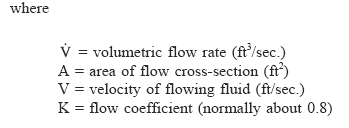Pitot Tube Type Flow Detector Basics Review
Electronics, Instrumentation & Electrical Database
Pitot Tube Type Flow Detector Review
A pitot tube is a pressure measurement instrument used to measure fluid flow velocity. The pitot tube was invented by the French engineer Henri Pitot in the early 18th century and was modified to its modern form in the mid-19th century by French scientist Henry Darcy. It is widely used to determine the airspeed of an aircraft, water speed of a boat, and to measure liquid, air and gas velocities in industrial applications. The pitot tube is used to measure the local velocity at a given point in the flow stream and not the average velocity in the pipe or conduit.
The basic pitot tube consists of a tube pointing directly into the fluid flow. As this tube contains fluid, a pressure can be measured; the moving fluid is brought to rest (stagnates) as there is no outlet to allow flow to continue. This pressure is the stagnation pressure of the fluid, also known as the total pressure or (particularly in aviation) the pitot pressure.
The pitot tube, illustrated in Figure F1, is another primary flow element used to produce a differential pressure for flow detection. In its simplest form, it consists of a tube with an opening at the end. The small hole in the end is positioned such that it faces the flowing fluid. The velocity of the fluid at the opening of the tube decreases to zero. This provides for the high pressure input to a differential pressure detector. A pressure tap provides the low pressure input.
The pitot tube actually measures fluid velocity instead of fluid flow rate. However, volumetric flow rate can be obtained using Equation E1.
![]() E1
E1

Pitot tubes must be calibrated for each specific application, as there is no standardization. This type of instrument can be used even when the fluid is not enclosed in a pipe or duct.
